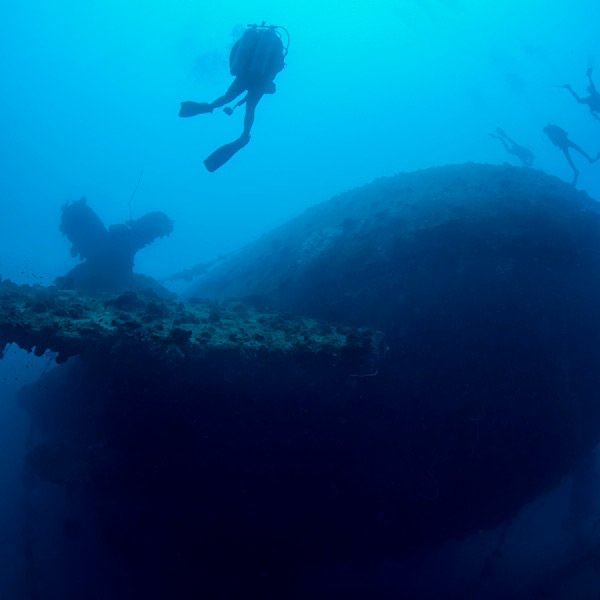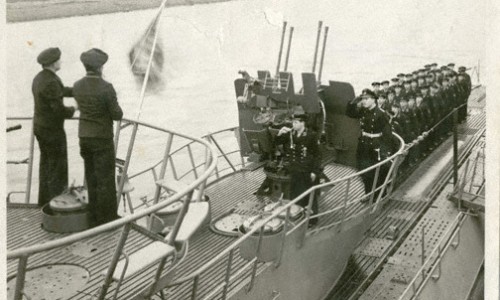Tragic Fate: The Diving Expedition of Chris and Chrissy Rouse


| Incident Location | Diver Name |
|---|---|
| United States, New Jersey | Chris Rouse, Chrissy Rouse |
Chris and Chrissy Rouse entered the world of diving in the mid-1980s, driven by a desire to escape the predictability of their lives. Hailing from a middle-class family in rural Pennsylvania, they pursued diving as a means of exploration and self-discovery. Their shared yearning for adventure and recognition propelled them forward.
Complicated Father-Son Relationship
The Rouse’s relationship was complex; they constantly bickered, yet their deep love for each other was evident. Their diving adventures were usually undertaken together, although a pattern of one-upmanship occasionally strained their bond. Despite their tensions, they shared an unwavering passion for diving and progressed rapidly through its various levels.
Discovery of Wreck
In 1991, experienced diver Bill Nagel, along with others like John Chatterton and Richie Kola, organized an expedition to explore an area off the coast of New Jersey where divers had reported mysterious sightings. The team discovered a World War II German submarine wreck, sparking a six-year quest to identify the sub and its crew.
Tragedy Strikes
During an expedition in 1991, diver Stephen Feldman was rendered unconscious and swept away in a current near the wreck. His body was not recovered until several months later. Despite the challenges, the expedition yielded few concrete findings.
Invitation to the Rouses
In 1992, the Rouses were invited to join an expedition led by John Chatterton. The Rouses were considered a formidable diving team, but their overconfident and ego-driven attitudes sometimes led them into risky situations. They lacked experience in deep wrecks and were relatively inexperienced, having gone from Open Water to Tech divers in a short span.
The Fatal Dive Plan
On October 12, 1992, the Rouses arrived for their final dive of the season, facing unfavorable conditions with choppy seas. Despite expressing doubts, they chose to dive to the 240-foot depth using regular air instead of trimix due to financial constraints. The decision to save money would prove to be a fatal mistake given the intense nitrogen narcosis experienced beyond 200 feet.
Lack of Experience and Judgment
The Rouses had minimal experience in deep wreck penetration and had only ventured to the Andrea Doria wreck before. Their continuous streak of minor mishaps led to jokes about their “black cloud” of bad luck. Chris even began making his own dive equipment after his excavating business failed.
Descent and Trapped
Descending alongside experienced divers, the Rouses attempted to penetrate the U-Boat wreck. Their plan to leave decompression bottles outside the wreck without staging redundant gas led to trouble. Inside the wreck, they encountered tangled cables and dislodged equipment. While attempting to free a piece of canvas, Chrissy became trapped under a piece of steel.
Struggle and Determination
Chris managed to free Chrissy, but their air supplies were exhausted. With poor visibility, they struggled to find the exit and had to ascend further from their decompression bottles. Narcosis was impairing their judgment, intensifying the danger.
Unfavorable Conditions and Doubts
The day’s conditions were challenging, and both Chris and Chrissy expressed doubts about the dive before descending. Despite these doubts, they pressed on, egged on by each other’s goading. This macho and overconfident attitude had driven their rapid advancement but also placed them in peril.
Narcosis and Ascent Mistakes
Narcosis reached extreme levels as they ascended. Chrissy tried to breathe from Chris’s damaged mouthpiece, leading to panic. Their ascent lacked proper decompression stops, setting the stage for decompression sickness due to the rapid rise from the depths.
Trapped in Decompression Sickness
As they ascended, Chrissy’s struggle to breathe became desperate. Both were caught in a severe case of decompression sickness. The consequences of their rushed and uncontrolled ascent were dire.
The Fatal Consequences
Chrissy’s attempt to breathe off Chris’s bottle failed, and panic set in. Their ascent without the necessary stops intensified their decompression sickness. The culmination of overconfidence, poor judgment, and an intense desire for recognition led to the tragic outcome.
The story of Chris and Chrissy Rouse serves as a stark reminder of the dangers of overconfidence in diving. Their passion and ambition drove them to remarkable achievements but also led to their undoing. Their ill-fated descent into the ocean’s depths serves as a cautionary tale for divers worldwide.
The Bends and its Agonizing Consequences
Following their ascent, both divers suffered the debilitating effects of the bends, also known as decompression sickness. The divers on the boat recognized the severity of their condition. The bends result from the expansion of nitrogen bubbles in vessels and arteries, causing excruciating pain and potential paralysis. Even surviving the bends can lead to severe damage, leaving many divers to express a preference for drowning over enduring its effects.
Neither of the Rouses were fortunate enough to escape the grasp of the bends. When the Coast Guard arrived, John Chatterton pleaded with a swimmer to take Chris’s lifeless body on the helicopter with Chrissy. After initial resistance, the swimmer eventually relented. John stressed the need for Chris’s presence to inspire Chrissy to fight for his life. The harrowing decision to transport both divers required extra time to load Chris onto the helicopter.
A Risky Gamble and Tragic Outcome
The journey to the hospital began with the hopes of saving Chrissy’s life. He was flown to a hyperbaric chamber at Bronx Municipal Hospital in New York City. His situation showed slight improvement as he regained feeling and coherence. However, medical decisions proved critical. The hospital decided to depressurize Chrissy from 160 feet to 60 feet, leading to his loss of consciousness and subsequent death. Chrissy’s final moments were filled with terrifying hallucinations and desperation.
Desperate Struggle for Survival
Experts deemed the Rouses’ chances of survival grim from the moment they surfaced after such an extended dive at extreme depths. The odds of surviving after a rapid ascent from 240 feet to the surface were slim, even with access to an on-site recompression chamber. The desperate attempt to save Chrissy’s life, despite the odds, illustrated the dire situation they faced.
Heartbreaking Farewell and Unanswered Questions
Susan Rouse, Chrissy’s mother, received the news of the accident from the hospital, although details were scarce. Chrissy passed away only five minutes after her arrival at the hospital, leaving her unable to see her son one last time. Remarkably, Susan had contemplated joining her family on the fatal dive, but work obligations prevented her. This twist of fate spared her life.
Posthumous Revelation: Identifying the Wreck

About five years after Chris and Chrissy’s tragic deaths, experts finally determined that the wreck they had discovered was U-869, a large ocean-going submarine that sank on February 11, 1945. While various theories emerged about potential interventions that might have saved them—such as using trimix and improved communication—none can be confirmed. The ultimate lesson, as highlighted by the author of “Last Dive,” is the necessity of effective communication in preventing such tragedies.
FAQ
Father and son dive team from the 1980s with a passion for exploration.
Desire to escape predictability and find adventure and recognition.
A World War II German submarine wreck off the coast of New Jersey.
Overconfidence, lack of experience, and a fatal ascent after a deep dive.
